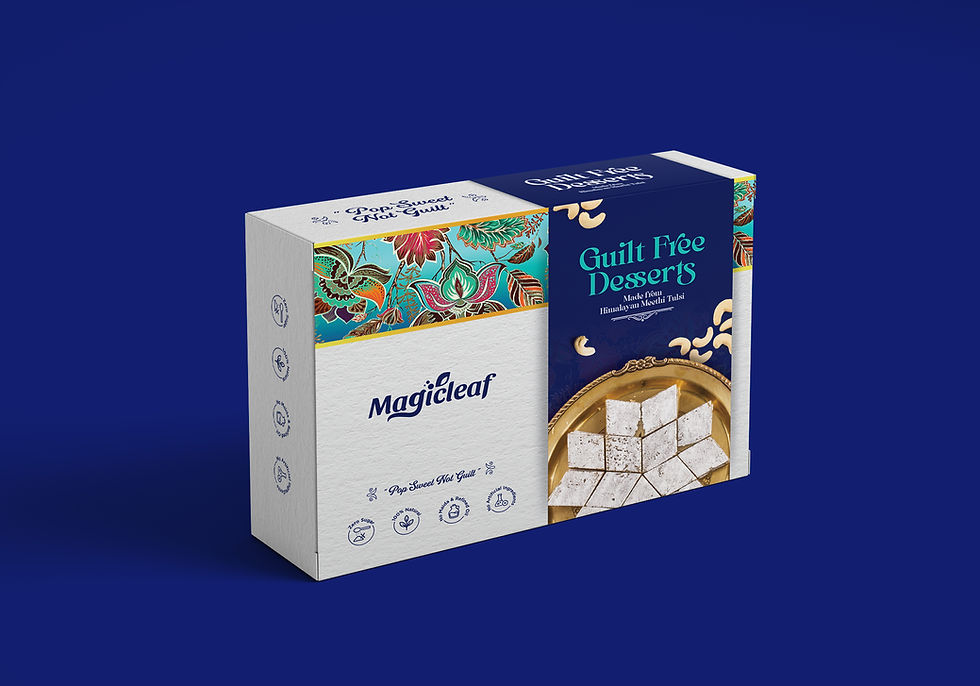First Impressions Online: Why Good Web Design Can Make or Break Your Business
- Brindha Dhandapani
- 4 days ago
- 3 min read

In today’s world, your website is often the very first interaction people have with your brand. Just like walking into a physical store or office, first impressions are formed in seconds and online, those seconds are even shorter.
Why First Impressions Matter Online
Is this business legitimate?
Can I trust them with my time, money, or data?
Do they seem professional and credible?
Will I find what I’m looking for quickly?
If your design doesn’t deliver clear answers immediately, users will leave. And here’s the catch: they’re not just leaving a page, they’re leaving your brand behind.
The Psychology of Design and Trust
Humans are visual creatures. Over 90% of first impressions come from design-related factors, not content. This means even if your product is outstanding or your services are top-notch, people won’t discover that if your website looks sloppy or outdated.
A clean, modern, and intuitive layout sends subtle but powerful signals:
Professionalism: You care about details.
Credibility: You invest in your business, so you’ll invest in your clients.
Trustworthiness: You’re safe to engage with.
Key Elements of a Trust-Building Web Design
1. Visual Appeal and Aesthetics
Your color palette, typography, and imagery all play a role in shaping perception. Brands with consistent, polished visuals appear more reliable. Think about Apple’s sleek minimalism or Airbnb’s friendly, approachable design, both instantly communicate brand personality and trust.
2. Navigation That Feels Effortless
If users can’t find what they’re looking for in a few clicks, they’ll leave frustrated. Clear menus, logical site architecture, and visible calls-to-action (CTAs) create a seamless journey.
3. Mobile-First Responsiveness
With over 60% of global traffic coming from mobile devices, a responsive design isn’t optional. Google’s mobile-first indexing also means a non-responsive site can tank your search rankings.
4. Page Speed and Performance
Every second counts. A delay of just one second in page load can reduce conversions by 7%. Fast-loading pages improve user experience and keep bounce rates low.
5. Consistent Branding
Your logo, tone of voice, and brand colors should remain consistent across every page. Inconsistency creates confusion, while familiarity builds trust.
6. Clear Calls-to-Action
Design isn’t just about looking good, it should guide users towards taking action. Whether it’s “Book a Demo,” “Buy Now,” or “Contact Us,” your CTAs should stand out visually and emotionally.
How Poor Web Design Destroys Credibility
Let’s flip the perspective. Imagine encountering:
Pixelated images or outdated stock photos.
Walls of text without breathing space.
Confusing menus that feel like a maze.
Broken links or error messages.
These mistakes scream unprofessionalism. To a user, if you cut corners on your website, you might cut corners in your services too.
Real-world example: Think of e-commerce. Would you trust entering your credit card details on a site that looks like it hasn’t been updated since 2010? Probably not.
The Business Case for Good Web Design
1. Higher Conversions
Great design isn’t just decoration—it’s persuasion. From strategic placement of CTAs to persuasive visual hierarchy, design influences buying decisions.
A Stanford study revealed that 75% of people judge a business’s credibility based on its website design. That credibility translates directly into conversions.
2. Improved SEO Performance
Google rewards sites with fast speed, responsive layouts, and good user experience. In other words, great design is also great SEO.
3. Competitive Advantage
In crowded markets, differentiation matters. A website that feels modern, authentic, and user-friendly instantly sets you apart from competitors.
4. Stronger Customer Loyalty
When users have a pleasant first experience, they’re more likely to return. A poorly designed site may capture clicks once, but never twice.
How to Build a Website That Instantly Impresses
Audit your current design: Be brutally honest, does it look like it belongs in 2025?
Prioritize user experience: Design with your customer in mind, not just aesthetics.
Invest in professional design: DIY templates have limits. A skilled designer ensures your brand is presented at its best.
Test and iterate: Use heatmaps, analytics, and user testing to refine continuously.
Stay updated: Design trends evolve. What looked modern in 2019 looks dated now.
Conclusion: Don’t Undervalue Your Digital Handshake
Your website is more than an online brochure; it's your brand’s first handshake with potential customers. In those first few seconds, design alone decides whether visitors stay, explore, and convert, or bounce to a competitor.
In 2025 and beyond, businesses that treat design as an investment, not an afterthought, will win trust, credibility, and customers. Because online, you don’t get a second chance at a first impression.
Working with experts makes a big difference. Ragi Media creates websites that look great, are easy to use, and help turn visitors into customers.




Comments